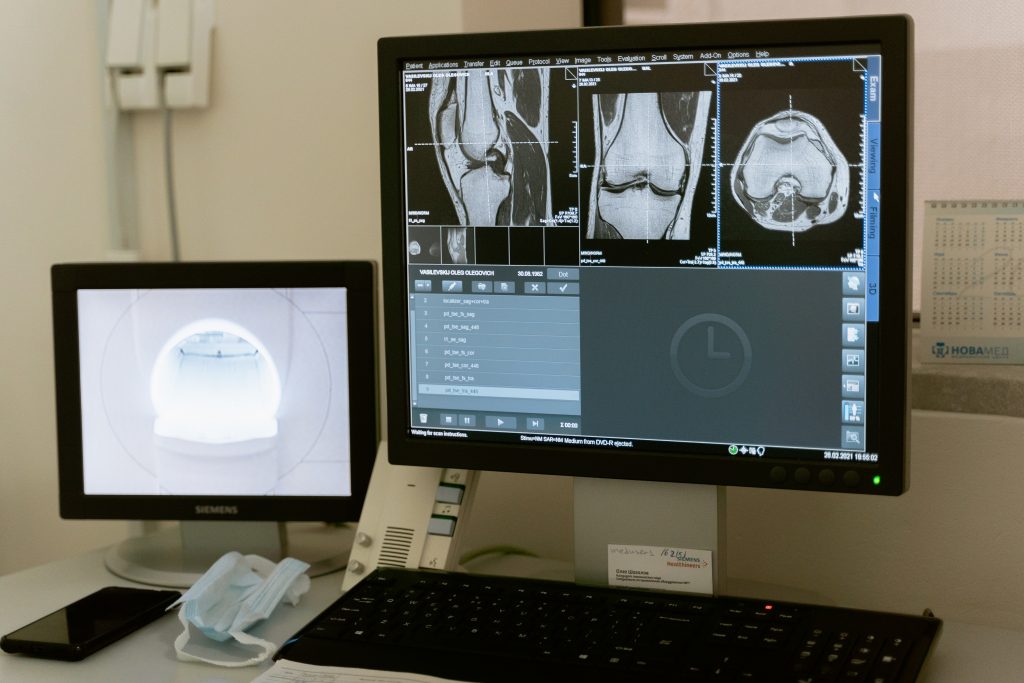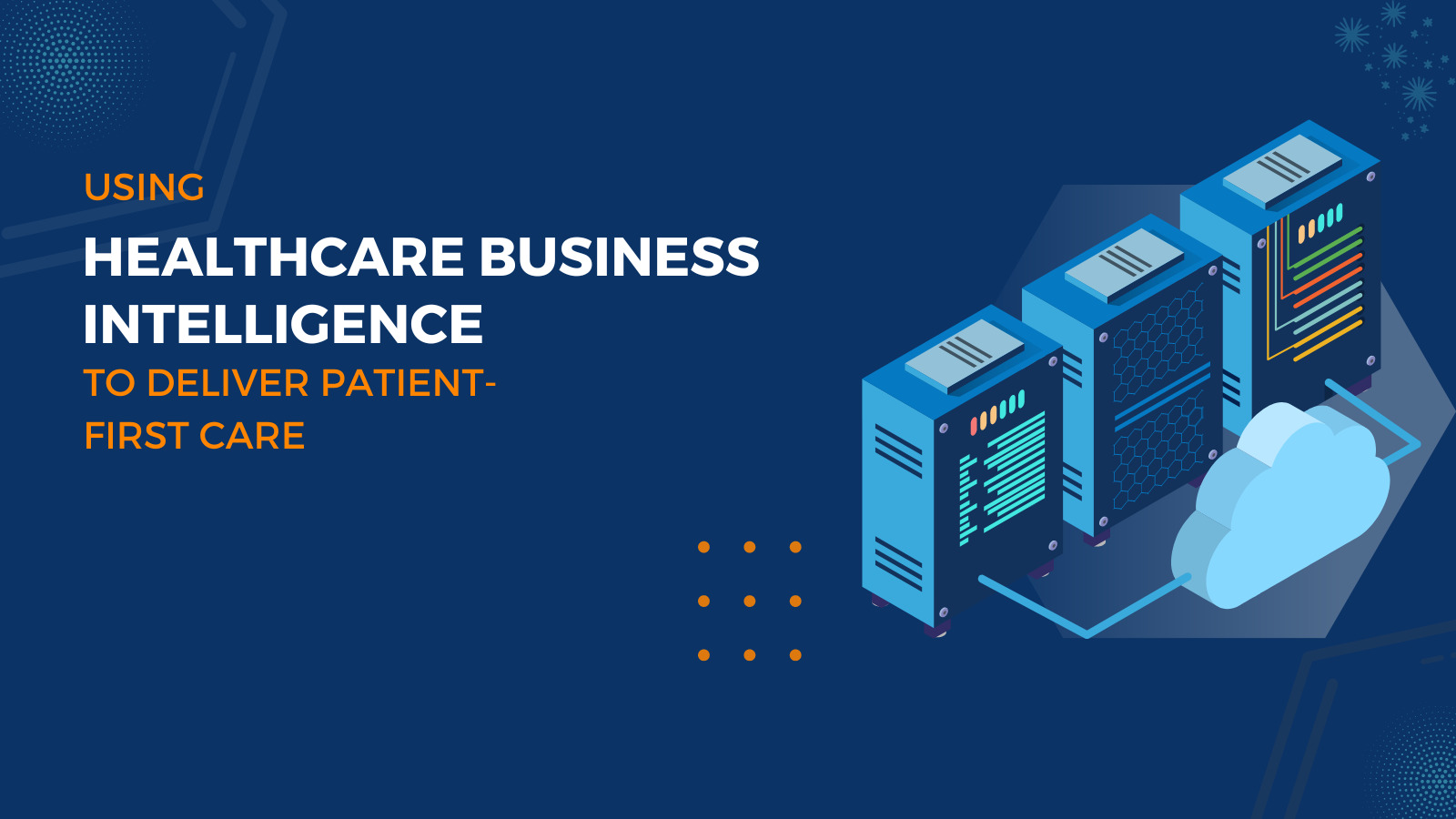
Leveraging Healthcare Business Intelligence to Deliver Patient-First Care
If there’s one thing the pandemic has taught us, it’s that investing in healthcare business intelligence is essential to improve patient care that organizations deliver. With a healthcare data warehouse driving business intelligence, organizations can consolidate data from multiple endpoints such as EHR, wearables, and diagnostic tests and accurately keep track of historical data to perform analysis and derive key insights.
As a result, healthcare business analytics does not only enable businesses to reduce their overheads and optimize operational processes such as staffing but also improves the chances of developing new and more effective treatment methods.
Let’s dive deeper into the benefits of healthcare business intelligence for organizations in the industry and how it can shape the future of patient-first care.
What is Healthcare Business Intelligence?
Healthcare business intelligence refers to the analysis of multifaceted data sources from multiple endpoints to derive actionable insights. In addition to opening up doors to untapped opportunities, healthcare business intelligence promotes collaboration between teams and allows them to record and evaluate data in various areas such as diagnostics, inventory management, and even claims processing within the broader health systems.
Before organizations can leverage their data for decision-making though, they need to ensure that all of their data is available in a centralized repository such as a healthcare data warehouse. This is because this data is often spread out across multiple transactional systems and thus remains siloed, preventing users from leveraging it for analysis. Once the data warehouse is populated with the required data, it’s much easier for organizations to derive healthcare BI build comprehensive dashboards in business intelligence software to break through the noise and identify key trends that are crucial for decision-making.
Applications of Healthcare Data Analytics
The importance of extracting and analyzing large swathes of healthcare data cannot be emphasized enough. Since healthcare data analysis affects all involved stakeholders from insurance companies and providers to patients, it’s no surprise that the healthcare analytics market has grown rapidly and is now expected to reach USD 75.1 billion by 2026.
Here are some of the key use cases driving this boom:
Identifying Hospitalization Trends to Streamline Staffing
Data from the Census Bureau’s 2019 American Community Survey (ACS) shows that the healthcare sector in the United States alone employed as many as 22 million workers. By harnessing the power of healthcare business intelligence, hospitals and clinics can identify which times of the year are associated with an influx of patients and make better staffing decisions to provide better facilities and facilitate better patient outcomes.

For instance, UC Health’s University of Colorado Hospital leveraged predictive analytics to streamline services and staff to create an environment conducive to surgery in operating rooms (ORs). This increased operating room efficiency translated to a yearly increase of 4% in OR utilization which translated to an additional $10 million in revenue.
Strategic Planning to Predict and Curb Outbreak of Disease
Data has played a major role in the fight against both the covid pandemic and other recent endemics. Collecting and analyzing different types of data about how demographic changes affect transmissibility of disease and how the infection rate has changed in different locations helps guide healthcare business intelligence efforts and paves the way for data-based decision-making.
That said, since such data can be extremely volatile especially in cases of highly transmissible diseases, storing your data in a data warehouse is of key importance to ensure that you can also track historical medical records and derive insights at speed. Additionally, the nature of healthcare data necessitates that the data warehouse is able to handle large volumes of data and can support querying in near real-time so a scalable architecture is needed.
Detecting Anomalies in Scans
Automating the analysis and, ultimately, the detection of anomalies in diagnostic scans such as MRIs, CT scans, and X-rays with the help of data analytics will not only speed up the treatment process for patients but also has a direct relationship with positive health outcomes.

The Benefits of Healthcare Business Intelligence for Hospitals
Healthcare business intelligence offers an array of benefits to organizations ranging from lowering costs by analyzing treatment expenditure to improving employee satisfaction. Let’s take a look at how investing in healthcare business intelligence can help organizations in the industry.
Reducing Resource Expenditure by Developing Effective Education and Treatment Plans
Data from the American Hospital Association shows that the cost of resources required for each hospitalization, which encompasses everything from medical devices to medication, has been going up for years. Organizations can, therefore, invest in healthcare business intelligence to develop education programs for disease prevention and minimize the chances of resources getting choked.
In cases where hospitalizations are unavoidable, hospitals can use historical data from an enterprise data warehouse to develop effective treatment plans to speed up the recovery process. Doctors in a cardiology department, for instance, could leverage data from previous patients to identify trends in the progression of symptoms through a business intelligence tool and ultimately create a treatment plan to prevent their patients’ conditions from worsening.
Leveraging Comprehensive Dashboards to Minimize the Risk of Fraud in Insurance Claims
The National Healthcare Anti-Fraud Association estimates that healthcare fraud alone could result in losses upward of $300 billion each year. Not only that, but presenting hospitals and other healthcare organizations with fraudulent insurance claims can also put an unnecessary strain on resources which could be used far more effectively.
With healthcare business intelligence, both hospitals and insurance companies can probe further into all claims and easily spot any inconsistencies such as phantom billing, upcoding, or unbundling etc. By mapping data from diagnostics and proposed treatment plans against bills. Preventing fraud at the company level also makes it easier for patients in need to access quality care without being overburdened by unreasonable costs.
The inverse also holds true where insurance companies are presented with fraudulent documents by healthcare organizations. In such cases, inconsistencies can be identified by mapping claims data against certain pre-defined dimensions such as drug prices to develop an appropriate course of action.
Analyzing Medical Equipment Options to Make Better Procurement Decisions
Data from a clinical journal article written from 2018 shows that hospitals in the United States spend approximately $200 billion on medical equipment every year. The cycles for these purchases, too, are quite extensive which is why ensuring that you’re making the right decision is of immense importance.
In order to make better decisions, hospitals can leverage business intelligence and improve their visibility into the procurement process with customized dashboards. With these dashboards, businesses can then track both the current inventory and the trends in pricing to make medical equipment purchases at the best possible time.
How Healthcare Business Intelligence Can Help Organizations Deliver Value-Based Care
Data analytics and business intelligence have more far-reaching effects than just reducing the cost per hospitalization and minimizing the risk of insurance fraud. Let’s take a look at how healthcare organizations can leverage data analytics to deliver patient-first care.
Tracking Historical Data to Provide Telehealth Services
The reliance upon remote healthcare has gone up tremendously in the last few years with data showing a 63-fold increase between 2019 and 2020 alone. Since telehealth is here to stay, healthcare organizations can leverage a data warehouse to accurately track patient data and diagnostic information, allowing doctors to not only provide remote consultation but also make data-driven decisions to minimize the risk of severe disease.
Speeding Up Research and Development for New Medication
The COVID-19 pandemic showed us how important it can be to invest in research and development of life-saving medication. Drug manufacturers can streamline the research, development, and testing process by storing and analyzing large swathes of data to drastically reduce time to market. During the R&D process, these businesses can process data of existing drugs to get a better understanding of how they work and why certain demographics are more prone to side effects.
Creating a central repository of all new data regarding a medication also allows manufacturers to save themselves from regulatory and compliance-related issues and ensure that personal identifiable information is not in the wrong hands.
Analyzing Customer Experience Data to Provide Better Care
Data from Gartner reveals that over two-thirds of companies compete primarily on customer experience. Healthcare organizations can use customer experience data gathered by surveys, phone calls, and even email correspondence to understand how they can improve their services.
For instance, administrative staff can email a feedback form to patients after each consultation comprising questions such as “Was the signage in the hospital adequate?” and “How long did you have to wait before being seen by a doctor?” to get a better understanding of the kind of problems that patients generally face. Once enough data is gathered, it can be analyzed to develop a plan to address common concerns.
Turbocharge Healthcare Business Intelligence with Astera DW Builder
Astera DW Builder is a data warehouse automation tool designed to help organizations build an agile data warehouse from end to end. Understanding the complexity of the medical industry, Astera DW Builder comes with a number of features ranging from slowly changing dimensions to track historical records which can help provide high-quality telehealth services, change data capture (CDC) for incremental data load to minimize the time and resources expended in consolidating results of trials from new medication, and even version control to rollback to a previous iteration if needed.
With a built-in Odata component, Astera DW Builder can also be used to connect to BI tools such as PowerBI and Tableau for enhanced visualization. This way, you can extract information with easy-to-understand charts and graphs to make data-driven decisions.
Want to learn more about the role of data analytics and business intelligence in healthcare? Check out our blog on the role of data warehousing and healthcare data analytics during the COVID-19 pandemic.
 Astera AI Agent Builder - First Look Coming Soon!
Astera AI Agent Builder - First Look Coming Soon!

